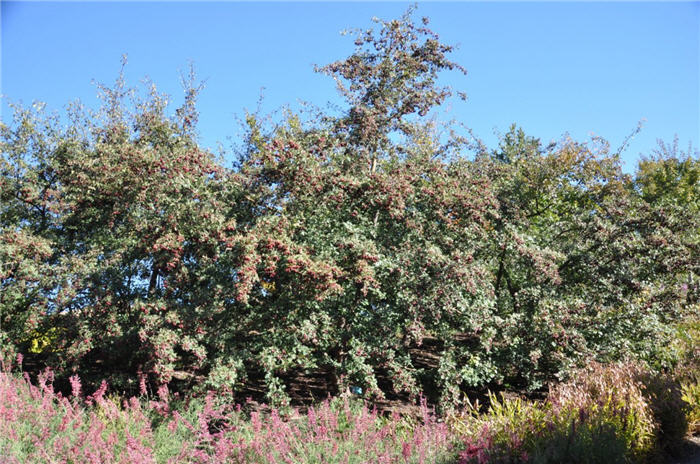| Botanical Name: Crataegis ambigua | |
| Common Name: Russian Hawthorn |

-
Anatomy
-
Culture
-
Design
Plant Type
Tree, Shrub
Height Range
12-25'
Flower Color
White
Flower Season
Spring
Leaf Color
Dark Green
Bark Color
Brown
Fruit Color
Red
Fruit Season
Winter, Fall
Sun
Full, Half
Water
Medium, Extra in Summer
Growth Rate
Moderate
Soil Type
Sandy, Clay, Loam, Rocky, Unparticular
Soil Condition
Average, Rich, Poor, Well-drained, Dry
Soil pH
Acid, Neutral
Adverse Factors
Thorns/Spines
Design Styles
English Cottage, Meadow, Native Garden, Woodland
Accenting Features
Fall Color, Showy Flowers
Seasonal Interest
Spring, Summer, Fall
Location Uses
Background, Shrub Border, Foundation, Walls / Fences
Special Uses
Hedge, Screen
Attracts Wildlife
Birds, Butterflies
Information by: Stephanie Duer
Photographer:
Photographer:
-
Description
-
Notes
Russian Hawthorn is a small ornamental tree that grows 12 to 24 feet tall and 6 to 12 feet wide. It's foliage is medium green and is finely cut; fall color is yellow. White flowers appear in clusters in late spring, followed by berries that ripen to a dark red in August. It's habit is more shrubby than tree-like, but it can be pruned to have a canopy.
Prefers full sun, though it will grow in part sun, and has low water needs. Will grow in sandy, clay, or loam soils; tolerates drought and compacted clay soil. Resists cedar apple rust. It does have thorns, though fewer than other Crataegus species. Hardy to USDA Zone 4a.